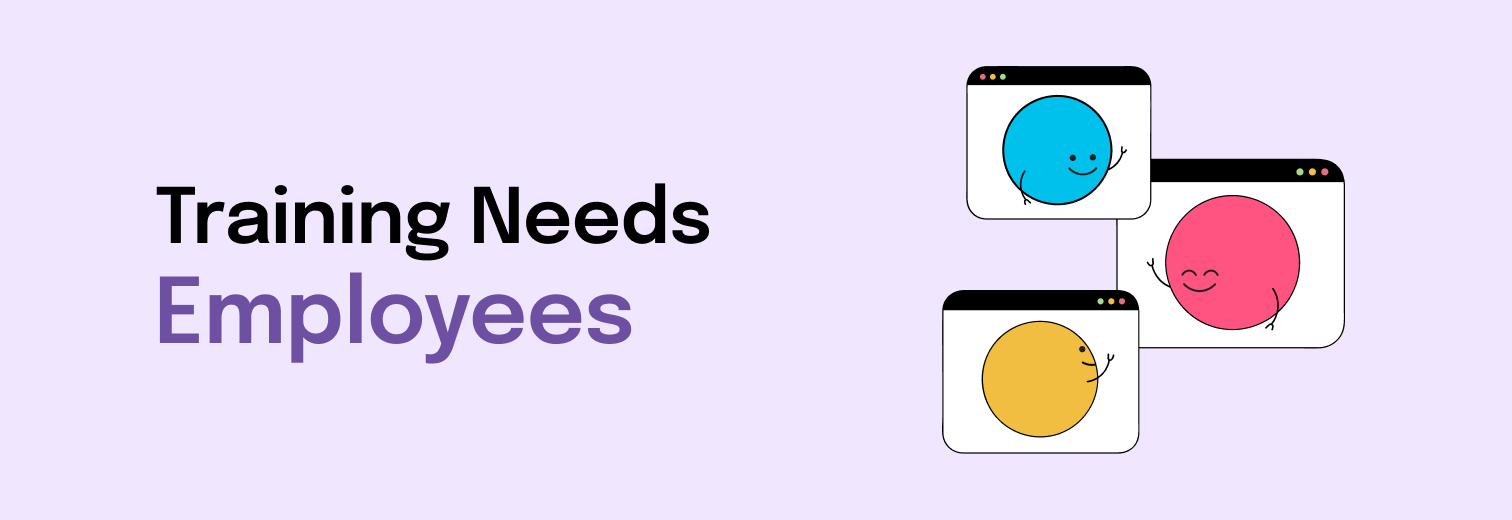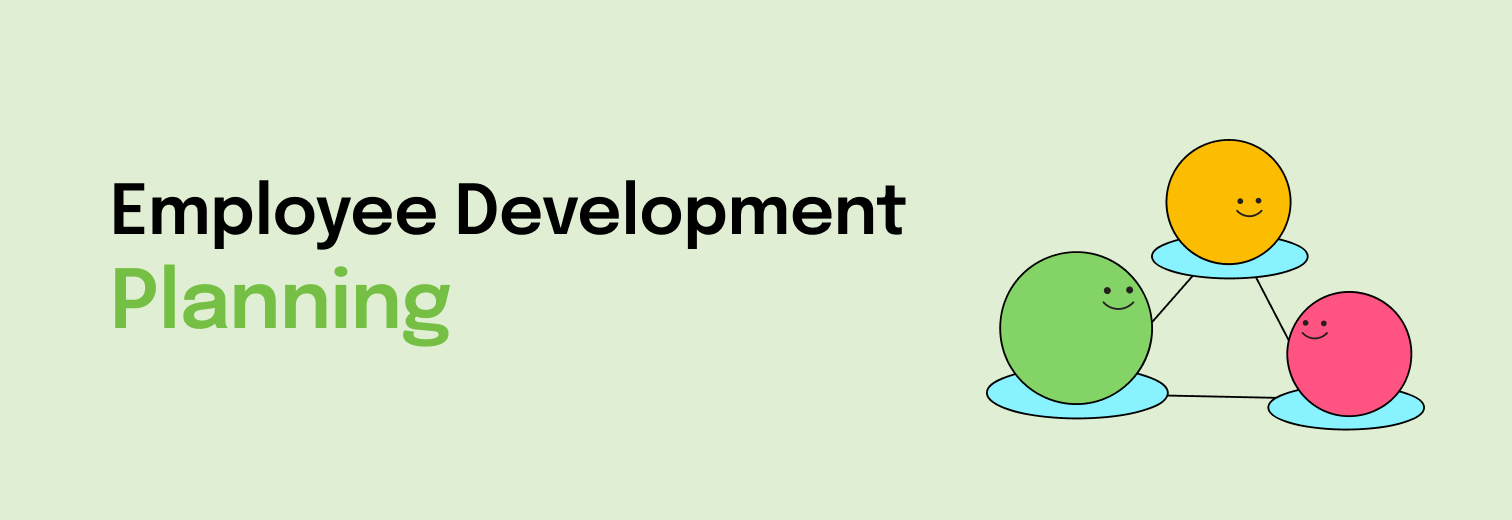How to Identify Training Needs of Employees
Identifying training needs of employees is a crucial step for any organization seeking to enhance productivity, employee engagement, and overall business success. By systematically analyzing employee training needs, businesses can create targeted training programs that address specific skill gaps, ensuring that employee training requirements are met effectively. Without a structured approach, companies risk investing in irrelevant or ineffective training programs, which can lead to wasted resources and unfulfilled business objectives. This guide explores the importance of employee training programs, methods for assessing employee training needs, and how to create custom training programs for employees that align with your organization's goals. By addressing training needs employees have, you can improve performance, retention, and job satisfaction across your team.
Understanding Training Needs Analysis (TNA)
Training Needs Analysis (TNA) is a structured process designed to identify specific training needs within an organization. It involves systematically assessing current skills, knowledge, and performance levels of employees compared to what is needed to meet organizational objectives. TNA is fundamental in creating employee training programs that are not only relevant but also impactful, directly addressing employee skill gaps.
Importance of Employee Training Programs cannot be overstated; they are essential in fostering a skilled workforce capable of adapting to changing job roles and market demands. By identifying training needs for employees early on, businesses can implement custom training programs for employees that enhance performance and align with strategic goals.
Key Methods for Assessing Employee Training Needs
To effectively address training needs employees have, organizations need to employ a combination of methods to gather comprehensive data. Here are the primary methods for assessing employee training needs:
-
Performance Reviews and Feedback
- Performance reviews are a key component of any employee development strategy. Regular feedback sessions between managers and employees provide invaluable insights into areas where employees excel and where they may require additional support. These evaluations help in analyzing employee training needs by highlighting specific areas that need improvement, allowing for the development of tailored training solutions.
-
Job Analysis and Descriptions
- Conducting a detailed job analysis helps to identify the skills, knowledge, and abilities required for each role within the organization. Comparing the current competencies of employees with the requirements of their job descriptions can reveal critical skill gaps. This approach ensures that the training needs employees are directly linked to job performance, making it easier to design effective training interventions.
-
Skills and Competency Assessments
- Competency assessments are tools that measure the current skill levels of employees against the competencies needed for their roles. These assessments can take various forms, including technical tests, soft skills evaluations, and practical on-the-job assessments. By assessing these competencies, organizations can pinpoint where training is needed most, ensuring that the training provided is both relevant and beneficial.
-
Surveys and Questionnaires
- Surveys are a valuable tool for identifying training needs for employees, allowing them to express their views on their training requirements directly. Employee surveys can include questions about perceived skill gaps, areas of interest, and specific topics they feel would benefit their development. This participative approach not only engages employees in the training process but also helps in creating more accurate and customized training programs.
-
Observation and Job Shadowing
- Direct observation of employees at work provides a clear picture of how tasks are performed and where inefficiencies may lie. Job shadowing, where employees observe or learn from more experienced colleagues, is another powerful method for identifying gaps in knowledge and skills. These approaches allow managers to gather real-time insights into the training needs employees, making it easier to address them effectively.
-
Focus Groups and Discussions
- Focus groups involve bringing together employees to discuss their training experiences, needs, and suggestions for improvement. Facilitated by a moderator, these sessions encourage open dialogue and can uncover common themes and challenges that may not surface in individual assessments. Focus groups are particularly effective for identifying training needs employees share across teams or departments, enabling targeted group training sessions.
Steps to Conduct a Training Needs Analysis
Conducting a comprehensive TNA ensures that employee training requirements are met and resources are used efficiently. Here’s a step-by-step approach to conducting an effective TNA:
-
Define Objectives and Scope
- Start by clearly defining what you want to achieve through your TNA. Whether it’s improving a specific skill set, increasing productivity, or enhancing overall employee engagement, having a clear objective will guide the entire process. Set goals that align with both employee training requirements and broader organizational strategies.
-
Collect Data Through Various Methods
- Utilize a mix of surveys, interviews, performance reviews, and observational studies to gather detailed information on training needs. Each method provides unique insights, and using multiple approaches ensures a well-rounded understanding of the gaps present. This comprehensive data collection is critical for accurately identifying training needs employees have.
-
Analyze Data to Identify Gaps
- Once data collection is complete, analyze it to identify discrepancies between current and desired performance levels. Look for common patterns or recurring issues that suggest widespread skill deficiencies. This analysis is the cornerstone of developing custom training programs for employees that specifically target the most pressing needs.
-
Prioritize Training Needs
- Not all training needs are equally urgent. Prioritize those that have the most significant impact on performance and business outcomes. Focus on skills that are essential for current job performance and strategic business goals, ensuring that resources are allocated effectively.
-
Design and Implement Training Programs
- Develop training programs that directly address the identified needs. Use a mix of training formats such as instructor-led sessions, e-learning, workshops, and on-the-job training to cater to different learning styles. Designing custom training programs for employees ensures that the training is relevant, engaging, and aligned with organizational needs.
-
Evaluate Training Effectiveness
- Post-training evaluations are crucial for measuring the success of the programs. Use feedback forms, performance assessments, and on-the-job observations to gauge whether the training has met its objectives. This step helps in refining future training initiatives and ensuring continuous improvement in employee skill development.
Benefits of Identifying Training Needs Early
Addressing training needs employees early in their career can lead to numerous benefits that directly impact organizational performance:
- Enhanced Performance and Productivity: By equipping employees with the skills they need, organizations can see immediate improvements in job performance, leading to increased productivity and better business outcomes.
- Cost-Effective Resource Allocation: TNA helps organizations avoid the costs associated with unnecessary or ineffective training by ensuring that every program addresses a specific, identified need.
- Improved Employee Engagement and Retention: When employees see that their training needs are being met, they feel valued and are more likely to remain loyal to the company. Engaged employees are more productive and contribute positively to the workplace culture.
- Strategic Alignment with Business Goals: Aligning employee training programs with organizational objectives ensures that employees are prepared to meet future challenges, supporting long-term business success.
Challenges in Identifying Training Needs and How to Overcome Them
Despite the benefits, some challenges can make identifying training needs for employees difficult:
Common Challenges:
- Data Accuracy: Gathering accurate data on employee performance can be time-consuming and complex.
- Employee Resistance: Some employees may be resistant to training, seeing it as criticism rather than development.
- Resource Constraints: Limited time and budget can hinder the implementation of comprehensive training programs.
Solutions:
- Utilize Data Analytics Tools: Advanced analytics can help automate the data collection and analysis process, making it more efficient and less prone to errors.
- Engage Employees Early: Involve employees in the training process from the start. Use surveys and feedback sessions to ensure they feel heard and valued.
- Invest in Scalable Solutions: Choose training programs that are scalable and can be adapted to meet varying levels of need across the organization.
Conclusion
Identifying training needs employees have is an ongoing process that plays a vital role in maintaining a competitive and skilled workforce. Conducting thorough Training Needs Analysis allows businesses to develop effective training programs that address specific skill gaps, improve performance, and align with strategic goals. By investing in tailored training solutions, organizations can boost employee engagement, retention, and overall productivity.
Call to Action (CTA)
FocusU CTA: Want to transform your team’s skills and enhance performance? At FocusU, we specialize in crafting custom training programs that meet your unique needs. From gamified learning experiences to tailored workshops, our solutions are designed to make a real impact. Contact FocusU today to discover how we can help you achieve your training goals!
Frequently Asked Questions (FAQs)
Q1. What is the purpose of Training Needs Analysis (TNA)?
TNA aims to identify specific skills gaps within an organization, ensuring training programs are aligned with business goals and employee needs.
Q2. How often should TNA be conducted?
Ideally, TNA should be conducted annually or whenever significant changes occur, such as new technologies, roles, or business strategies.
Q3. What are the best methods for assessing employee training needs?
Combining methods such as performance reviews, job analysis, surveys, and direct observation provides a comprehensive understanding of training needs.
Q4. Why is identifying training needs for employees important?
It ensures that training is relevant, targeted, and effective, ultimately enhancing job performance and organizational success.
Q5. How can businesses create custom training programs for employees?
By analyzing employee training needs and designing programs that directly address identified gaps using a mix of learning formats.
Q6. What are the challenges in addressing employee skill gaps?
Challenges include accurate data collection, employee engagement, and resource constraints. Solutions involve using technology, involving employees, and prioritizing critical needs.
Q7. How can evaluating training effectiveness benefit an organization?
Evaluation helps determine if training objectives were met, allowing for adjustments and continuous improvement in training quality.
Q8. Can TNA help with employee retention?
Yes, by addressing training needs employees value, organizations can enhance job satisfaction, reduce turnover, and build a more committed workforce.



